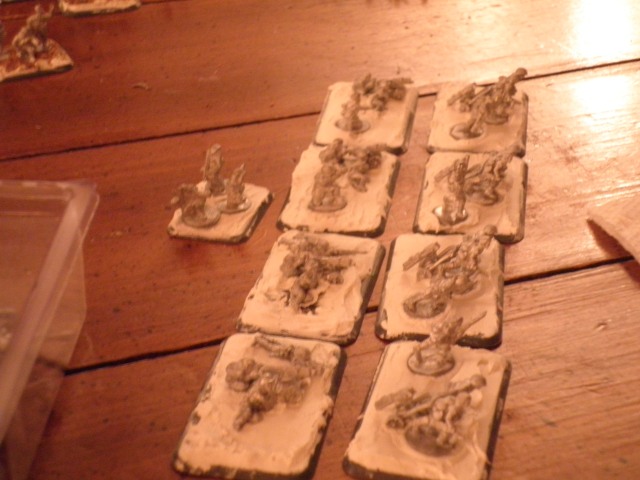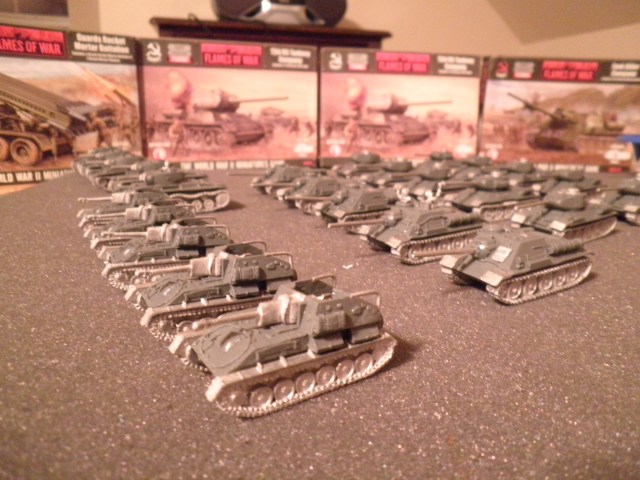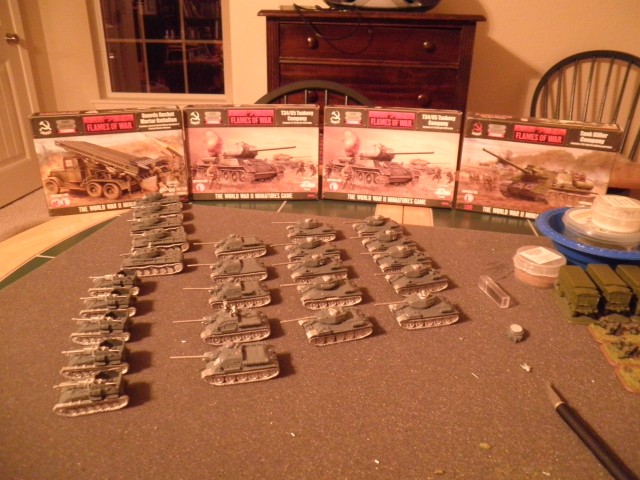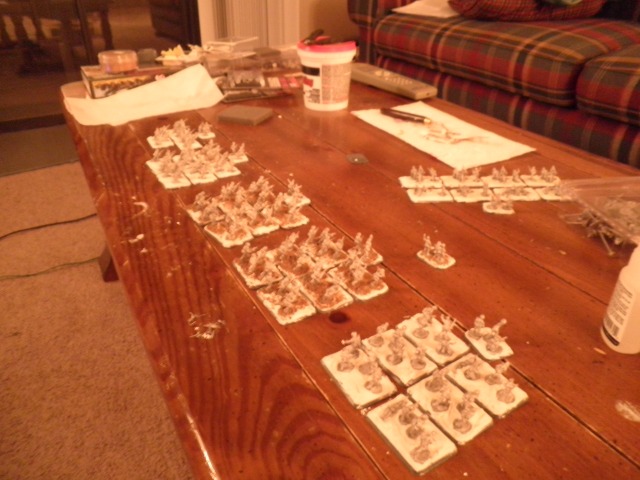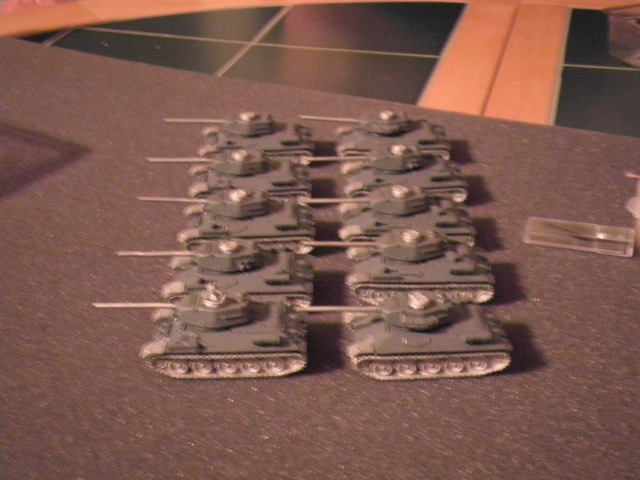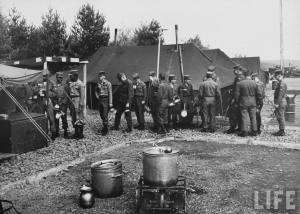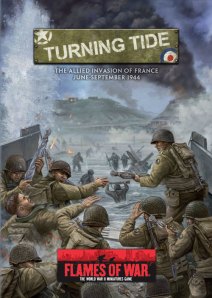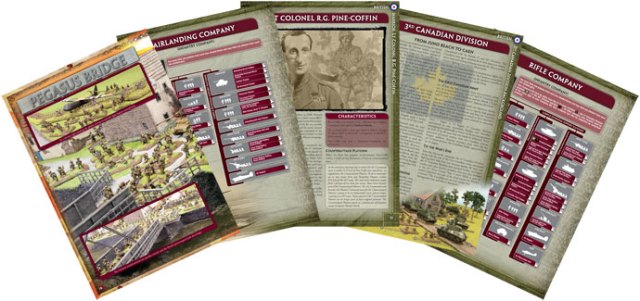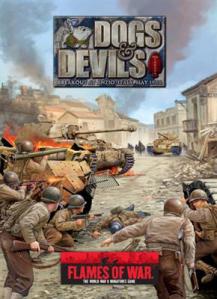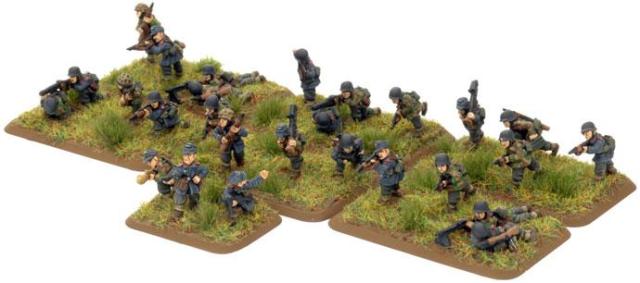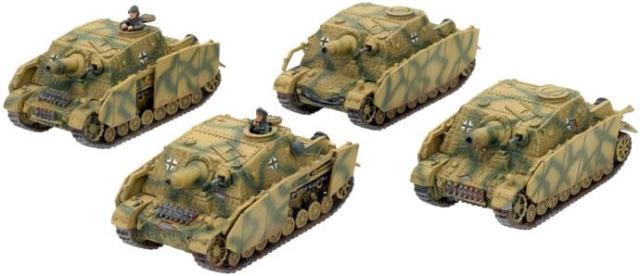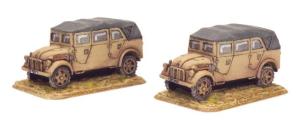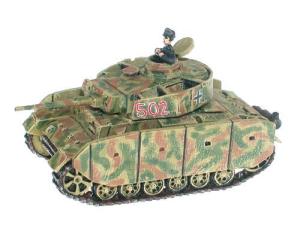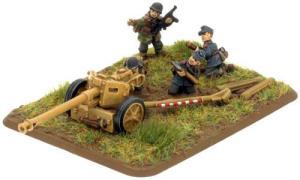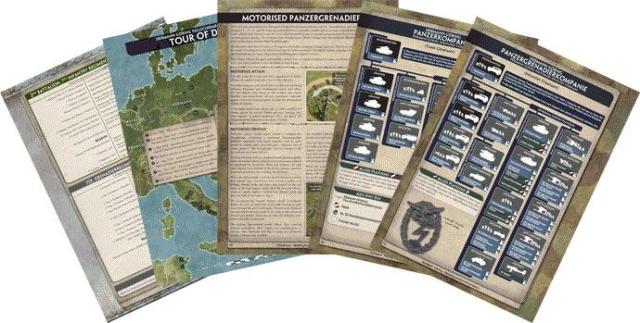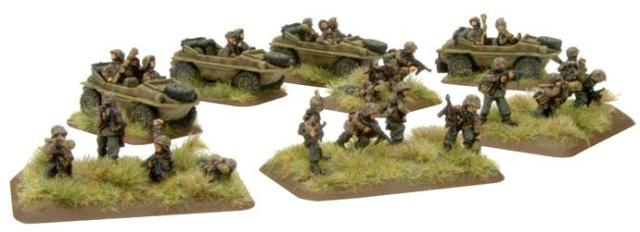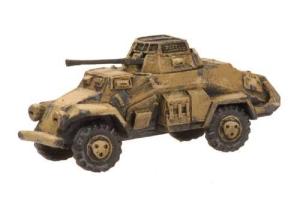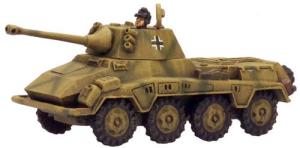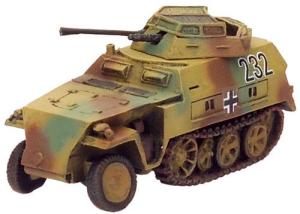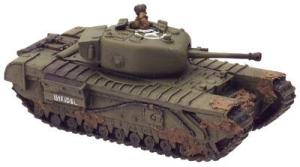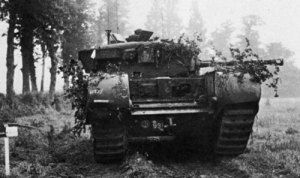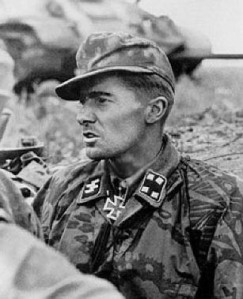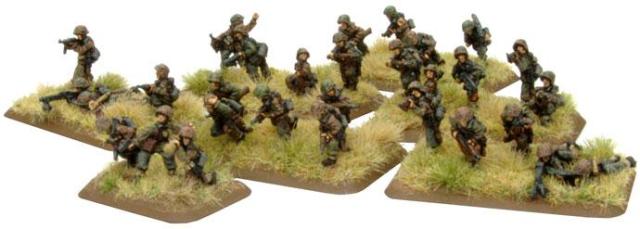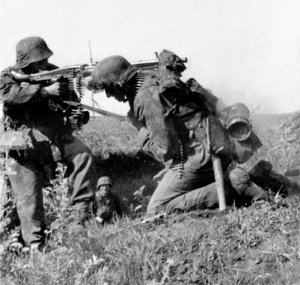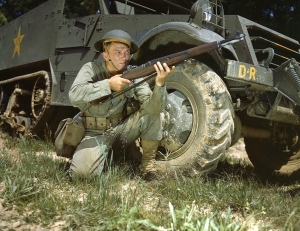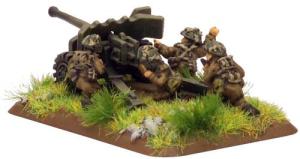Archives
Categories
-
Join 4 other subscribers
Your Authors
Cloud
Back in Action
After a several month hiatus of school, work and various other activities I am happy to report a new slew of articles and army lists are on the way. My brother and I will be starting a joint effort late war soviet force soon and will be updating the blog with new unit analysis and a progression of the list. There is a lot to cover in terms of FoW news such as Monte Cassino, new PDF lists and the various Italy terrain sets that were released. So get in line and grab your chow!
Posted in Uncategorized
Leave a comment
3rd Canadian Infantry Division: Rifle Company
As I explained in a past article, the Canadians are an aggressive and unique option for the British Commonwealth in late war. The new rifle company list from Turning Tide offers a Canadian player all of the options of a full British rifle company with the benefit of Canadian special rules such as “Dead Men Walking” which allows company commanders to re-roll the first failed company moral check they are forced to take. My usual list is as follows:
- Company HQ 25 pts
- Rifle Platoon- 3 squads (Captain John Treleaven) 175 pts
- Rifle Platoon- 3 squads 150 pts
- Rifle Platoon- 3 squads 150 pts
- Anti Tank Platoon (6 pdrs)/Loyd carriers – 3 sections 160 pts
- Carrier Platoon – 2 carrier patrols 155 pts
- Machine Gun Platoon – 1 section/mmg carriers 80 pts
- Independent Armored Platoon (3 Shermans/ 1 Firely) 290 pts
- Breaching Group (4 engineering teams) 280 pts
- Assault Field Battery, Royal Artillery – 2 gun troops 260 pts
- Air Observation Post 25 pts
Total: 1750
The 3rd Canadian rifle company is one of my personal favorites as a result of its ability to place large amounts of platoons and firepower on the table. I believe the Canadian rifle company is one of the most balanced and potent list that can be fielded in late war and I will explain how I use the above list and what its major strengths are.
The greatest asset that the 3rd Canadian list posses is its ability to be very aggressive while still having the necessary units to provide a layered defense. This is a result of the combined arms approach of the British in general. The most important element of any rifle company is a core of Rifle platoons. I always take at least three so I have most, if not all of the table/objectives covered by infantry support. Many lists waver, especially on the offensive as a result of insufficient infantry support. At 150 pts, a Canadian rifle platoon is a cheap, solid unit that provides 7 rifle/mg bases with a light mortar and PIAT.
Another unique asset that pertains to this “Turning Tide” list is the ability to take breaching groups. Breaching groups are special engineering units that can be swapped out for an m-10 platoon, a Sherman platoon, Churchill avre’s and a variety of other engineering units. This selection is made before deployment and can add a great deal of versatility to the list. More importantly, any company containing Breaching groups is always required to be the attacker. This allows me to design an aggressive Canadian company that is ideal for being on the offensive in almost all situations.
Captain John Treleaven is another unique characters for the Canadians and offers a cheap yet reliable motivation modifier. Treleaven is a platoon commander that is a fearless veteran and allows his own platoon to take motivation checks on a 3+. Treleaven is also able to take company command checks as if he were the company commander. This is especially useful if the company commander is killed and allows the company check to be taken on his fearless rating.
On a whole the 3rd Canadian rifle company list above has all major components that make a competitive list. The list has reliable and abundant AT, a critical mass of infantry, the ever powerful eight gun royal artillery battery, recee/harassing units , medium armor support and the option to change a platoon on the fly based on the opposition.
Hermann Göring Panzergrenadierkompanie
The Hermann Göring Fallschirmpanzerdivision from the Dogs & Devils book provides several unique lists for a German player in Late War.
- A full Panzer III M companie can be fielded, the only one of its kind in Late War. While not a great tank at this stage of the game, 18 of them can be put down for less than 1400 pts.
- The Schwere Aufklarungsschwadron (Heavy Reconnaissance Companie) has Wespes as a core combat platoon and allows a German player to run an interesting mix of motorised infantry and guns with multiple armoured car patrols.
- The Grenadier Companie is the first to make available Panthers for the standard German infantry list.
The support options are outstanding in this book. Tigers, Panthers, Brummbärs, Elephants and Hornisses are all available, meeting the heavy armour and firepower requirements of any German player. There are also several interesting Italian assault guns and Paratrooper forces to choose from, meaning that there is something for everyone in Dogs & Devils. As the title of the article implies, I will be providing my 1750 pt Hermann Göring Panzergrenadier kompanie. This force is rated Confident Veteran and is an Infantry Company. I will do a points breakdown and analyze what I believe are the strengths and weakness of this force.
- Company HQ w/ 2 Panzerknackers 55 pts.
- HG Panzergrenadier Platoon – 3 Squads w/Panzerknacker 220 pts.
- HG Panzergrenadier Platoon – 3 Squads w/Panzerknacker 220 pts.
- HG Anti-tank gun Platoon – 3 7.5 cm PaK 40 180 pts.
- HG Panzer Platoon – 3 Panzer III M w/ concertina wire 255 pts.
- Assault Tank Platoon – 4 Brummbärs 280 pts.
- Paracadutisti Platoon – 2 Squads w/Panzerknacker 130 pts.
- HG Heavy Panzerspah Platoon – 2 Patrols 180 pts.
- HG Motorized Artillery Batterie – 4 10.5 cm leFH18 230 pts.
- Total Points 1750 pts.
A special aspect of the Hermann Göring division is its rule set. The division was an elite formation and its combat experiance provided an elevated esprit de corps among its members. Because of this, the division benefits from the Elite Troops special rule. This allows any Hermann Göring Platoon (designated HG) to reroll any failed platoon morale check and allows the Company Commander to reroll company morale checks. I cannot stress what a huge benefit this rule entails. As I stated in my Waffen-SS article, German units and companies usually never have the ability to modify their morale situation. With the Elite Troops rule, HG platoons now have a better chance of sticking around in a fight than do SS-platoons. Attacks can now continuously be pressed home as attrition becomes more of a factor late in the game. However, it should be restated that HG platoons are Confident and that as far as counterattacks and unpinning is concerned an unaided 4+ is still required to pass.
If the Panzergrenadiers are mounted in trucks they can benefit from the Motorized Movement special rule. If the truck is destroyed by a weapon with a 5+ or 6+ firepower rating each team embarked takes a skill check (3+ for Vet. HG platoons). If passed, the teams exit adjacent to the vehical and are both pinned and “gone to ground”. This is a useful rule as I consider Panzergrenadiers to be too expensive to risk being destroyed in an unarmoured vehical. A 5+ passenger save is a poor substitute for a couple extra inches of movement in my opinion. However Motorized Movement essentially gives your teams back their standard infantry save (3+). Freed now from the danger of stray shots crippling the platoon, the mobility offered by the trucks can now be more fully exploited.
This HG Panzergrenadierkompanie is designed around the concept of combined arms. With three infantry platoons, three armoured platoons, and two gun platoons this company should be competent either attacking or defending. When on the offensive, the Brummbärs, artillery and armoured cars should be able to punch a hole in the enemy line through which the Panzergrenadiers can exploit. With the Brummbär’s assault cannon having a 1+ firepower check and bunker buster statues, it should not take very long to blast enemy guns and infantry teams into dust. With its AT value of 13, its also a great short range anti-tank option. Since both main tank platoons are equiped with schurzen, tank assaults against enemy infantry positions are encouraged. With 21 Veteran infantry bases, there should be enough bodies to sustain an attack against a fortified position. Combined with the panzergrenadiers benefiting from the Elite Troops rule and the Paracadutisti platoon being Fearless, all 3 of the infantry platoons should be able to hang on even as the losses start piling up.
On the defense, the company is just as potent. Pak 40s provide a very solid anti-tank defense and panzerknackers are abundant throughout the infantry teams, giving them a decent AT ability in assaults. The panzergrenadiers being MG teams lets them put out a very respectable amount of fire, and combined with all the machine guns mounted on the armoured vehicals, there is enough small arms fire to shred a Soviet infantry company. The two armoured car patrols and Panzer IIIs are great firebrigade units as they can move easily around the table providing support where needed. Also of great help is the concertina wire on the Panzer platoon. While it is on the tank, the wire allows that Panzer III to act as a pioneer supply vehical, giving every platoon in command range the ability to reroll their “dig in” attempts. The wire can also be deployed once the game starts meaning a German player can place it precisely where it will cause the most delay to the enemy. Two 8″ strips of wire are deployed, one on either side of the tank.
This is a very solid list that combines some potent weapons into a company that also puts a high number of platoons down on the table. This list counts 8 platoons that are deployed, and 9 once the game begins. Combining heavy, medium and light armour there are enough options to take on most enemy units. The biggest weakness of this list is its lack of a really heavy long range anti-tank. IS-2s and Panthers might be a problem, but these are expensive units that can be worked around if neccessary. In conclusion, the Hermann Göring division is a great addition for German players with its unique lists, great support options, and excellent special rules. Id encourage any German player to pick it up and check it out.
List Making 101 in Flames of War
After having several posts discussing the tactics, theories and doctrines of the many units in Flames of War, I thought it was appropriate to start discussing the process of making army lists. This article will be followed by several sample lists by our authors and myself that will give good examples of what makes balanced and competitive list.
List making is an often neglected art in FoW (paling in comparison to 40k) due to the more limited selection of individual unit customization and the tendency to build forces on historical motivation only. Players new to FoW will often be surprised that there is no one list or even set of lists that will prevail over all others. Unlike 40k, unit stats do not (or rarely) change due to new and updated books, thus eliminating the phenomenon of “codex creep”. With this in mind, it is crucial to understand what the role of each unit is in a list and how it operates with other forces on the table. The excellent list making charts in battlefront books allow for an easy and quick way to make lists that will be competitive (and historical) in almost every game. It is up to the player, however, to make the crucial selections of units that will have a primary focus on the table
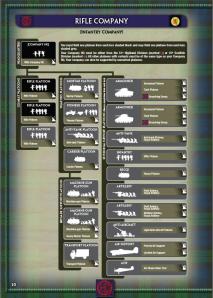 When building a list in FoW there are many factors and variables to consider in order to have a coherent and effective force. When selecting platoons for an army list it always essential to consider what there actual role will be on the table. This may sound rudimentary and simple, but I have seen many lists that contain units for little to no apparent reason other than to fill point requirements. When selecting platoons, it is also important to figure out if they mesh together to create a unified fighting force that is able to support itself and perform a variety of tasks. When creating a list there are several main areas of focus that should be addressed in all company types.
When building a list in FoW there are many factors and variables to consider in order to have a coherent and effective force. When selecting platoons for an army list it always essential to consider what there actual role will be on the table. This may sound rudimentary and simple, but I have seen many lists that contain units for little to no apparent reason other than to fill point requirements. When selecting platoons, it is also important to figure out if they mesh together to create a unified fighting force that is able to support itself and perform a variety of tasks. When creating a list there are several main areas of focus that should be addressed in all company types.
Platoon Count: This is an often overlooked area of concern, but can be decisive in deciding the outcome of a game before it even begins. With almost half of the normal game types employing reserve rules, there is a good chance you will be playing with only half your platoons (rounding down) at the start of a game. Therefore, it is good common sense to try to field an even number of platoons in a company. When playing with British rifle companies I aways shoot for at least 8 platoons so I can have a good mixed force down if I am forced to play with only half my army at the beginning of the game. Rifle companies should be compelled in most situations to always take at least three platoons of infantry in order to have a “critical mass” of infantry.
Offensive Capabilities: Probably the most common error made by all FoW players is the tendency to make lists (especially infantry companies) that are ideal for defending only. For example, players will often take only towed or immobile AT guns, limited to no artillery support, Heavy Machine Gun platoons and large amounts of unsupported infantry. In combination, lists that have the aforementioned attributes can be quite ineffective at sustaining large scale assaults in missions where you will be forced to attack or have a meeting engagement (free for all, encounter). When designing a list, always think of the various mission types you could be participating in and opposing lists you will be going up against. Spending the extra points to make your AT self-propelled can make a huge difference in a game where you are forced to traverse long distances on the offesnive.
Anti Tank : Making sure a list has the appropriate amount of anti-tank can be crucial in preventing an opposing armored company from moving with impunity on the table. AT platoons have some of the most varied weapons and vehicles in the game and are able to fit almost any situation or list. When selecting AT in a list, be sure to not overdue the anti-tank or under equip yourself for dealing with armor. German players can potentiality suffer the most from overdoing their AT by selecting 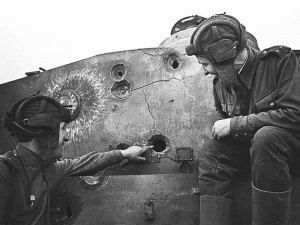 several expensive and high value AT guns. Though Panthers and Hornisses are both exceptional and feared units, having both in a list for the purposes of AT is redundant and weakens the list overall. When choosing AT platoons also keep in mind what period you are in and what your likely opponents are. If you are playing against the Germans in late war, a few 6 pdrs or Sherman IIIs will more than likely fail at eliminating enemy heavy armor. Dedicated AT units such as M-10s, Marders, Pak 40s, 6pdrs and SU-85s are all good choices. These platoons’ relatively cheap costs and effective AT abilities support the rest of your list that is not equipped to handle armor.
several expensive and high value AT guns. Though Panthers and Hornisses are both exceptional and feared units, having both in a list for the purposes of AT is redundant and weakens the list overall. When choosing AT platoons also keep in mind what period you are in and what your likely opponents are. If you are playing against the Germans in late war, a few 6 pdrs or Sherman IIIs will more than likely fail at eliminating enemy heavy armor. Dedicated AT units such as M-10s, Marders, Pak 40s, 6pdrs and SU-85s are all good choices. These platoons’ relatively cheap costs and effective AT abilities support the rest of your list that is not equipped to handle armor.
Recce: This is another important category, and a crucial component of any balanced list. The ability to remove the “gone to ground” status of an enemy platoon (especially against veterans) can be extremely important in order to gain key range ins or when pinning. Reece does not have to be fancy or a large unit in order to get the job done. These platoons are usually fairly cheap because of this, and can easily be fit into most companies. Recce also fills the important role of harassing the enemy with quick, hit and run tactics using “cautious movement” to stay out of harms way. Whether it be a single Carrier patrol for the British, a soviet recce infantry platoon or the various German options (see Chimera1715’s article) recce simply needs to get the job done.
Template Weapons/Pinning: With the exception of some armored companies, every list should have some capability to project artillery templates down the table. This can be as simple and cheap as a 4 gun mortar section or as elaborate as a Soviet 12 gun battery. Either way, your tanks and especially infantry are going to need help when trying to pin and assault. Templates are the most effective way to fill this vital role. For almost all armies (excluding the Soviets) templates can provide valuable smoke barrages as well, concealing your movement and frustrating enemy units.
Company Cohesion: Arguably the most important element of any list is its ability to work as a single effective unit. Always be aware of the purpose of each unit and regularly look into why you are actually choosing certain units. What is their role? Are they offensive or defensive oriented? Will they be able to support my core choices? These are important questions every gamer should ask themselves when making competitive and fun lists. Hodgepodge lists often play as they are described; ineffectual and disorganized.
The concepts listed above are by no means all encompassing for every list in FoW, but they do provide the basic framework for a successful and competitive list. List making can be a entertaining process in FoW do to the sheer amount of lists and the historical relevance of them. Never be afraid to try new unit combinations or lists simply because they appear weak. Following the basic rules above can make almost any list enjoyable to play with.
German Recce Forces in Late War
Reconnaissance serves an important fuction on the Flames of War battlefield. Be it the extra recce move before the game begins or using “eyes and ears” to rid an enemy platoon of its “gone to ground” statues, recce platoons can be critical components to any German list. This article will look at the some of the more common recce platoons and their uses.
Unlike many Allied or Soviet lists, the deployment of German recce platoons is heavily dependent on the the type of company deployed. Standand Grenadier or Luftwaffe companies usually only have access to basic 5-team platoons made up of Rifle teams. While seemingly a very “lame” platoon, this recce group’s main beneift lays in its cost, which is quite cheap. The Grenadier Scout Platoon does only one thing well, so a 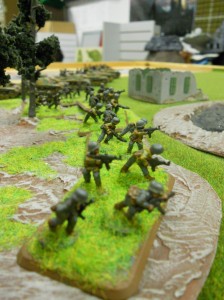 German player shouldnt be tempted to try anything fancy with it. These platoons should get into scouting position and go to ground. Movement should be kept to an absolute minimum. If the situation does call for it, Scout Platoons can be used as a cheap assault force since (despite their utter lack of equipement) they are usually Veterans, and still hit on a 3+ in the assault step. If a German player does want to up their firepower, there are a few options. The command team can be replaced with a SMG/Panzerfaust team and in some grenadier lists, the Rifle teams can be replaced by Assault Rifle teams. While these upgrades significantly increase the squads shooting potential, they also make it prohibitivly expensive. A wiser option would be to just purchase another Grenadier infantry platoon.
German player shouldnt be tempted to try anything fancy with it. These platoons should get into scouting position and go to ground. Movement should be kept to an absolute minimum. If the situation does call for it, Scout Platoons can be used as a cheap assault force since (despite their utter lack of equipement) they are usually Veterans, and still hit on a 3+ in the assault step. If a German player does want to up their firepower, there are a few options. The command team can be replaced with a SMG/Panzerfaust team and in some grenadier lists, the Rifle teams can be replaced by Assault Rifle teams. While these upgrades significantly increase the squads shooting potential, they also make it prohibitivly expensive. A wiser option would be to just purchase another Grenadier infantry platoon.
As usual with German forces in Late War, it is the Panzergrenadier divisions that get access to the higher quality and more capable recce forces. Unlike Grenadier or Luftwaffe divisions, all recce platoons for panzergrenadier companies are motorized or armoured. The most common of these platoons is the Panzer Scout Platoon ( ex. image at top of post). 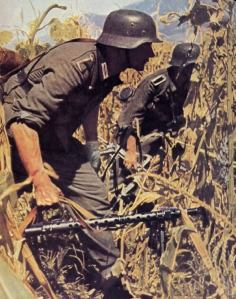 Made up of four MG teams they are usually equiped with motorcycles, kübelwagens, or schwimmwagens. The great advantage of these vehicals is their “jeep” classification, meaning they can move a full 12″ over cross-country terrain. If the German player has the first turn, this unit can traverse 24″ on the board before the enemy ever gets a shot off. Getting into a spotting position before the rest of a German force engages in battle ensures no wasted time and maximizes the effeciency of all units. Also, being MG teams this unit can put out a decent amount of support fire. One nifty use for these units is that the SS versions of this platoon can swap out their MGs and recce status to equip every team with SMG/Panzerfausts. Now designated as tank hunters, teams in this platoon can make combat attachments. Properly employed, this small platoon can be an effective blocking force as enemy armour will be very leery of engaging so many ‘fausts. The main downside to these units is cost; having motorised transport and machine guns for every team puts the unit at around 160-185pts.
Made up of four MG teams they are usually equiped with motorcycles, kübelwagens, or schwimmwagens. The great advantage of these vehicals is their “jeep” classification, meaning they can move a full 12″ over cross-country terrain. If the German player has the first turn, this unit can traverse 24″ on the board before the enemy ever gets a shot off. Getting into a spotting position before the rest of a German force engages in battle ensures no wasted time and maximizes the effeciency of all units. Also, being MG teams this unit can put out a decent amount of support fire. One nifty use for these units is that the SS versions of this platoon can swap out their MGs and recce status to equip every team with SMG/Panzerfausts. Now designated as tank hunters, teams in this platoon can make combat attachments. Properly employed, this small platoon can be an effective blocking force as enemy armour will be very leery of engaging so many ‘fausts. The main downside to these units is cost; having motorised transport and machine guns for every team puts the unit at around 160-185pts.
The real strength of German reconnaissance forces in Late War is their mechanized recce platoons. Made up of armoured cars and halftracks, they are generally better armed, armoured and more mobile than their Allied or Soviet counterparts. The main armament for most of these vehicals is the 2 cm KwK 38 gun which in game has a 16″ range, RoF3 and AT5 with a 5+ firepower check. While not suited for engaging enemy armour, the 2cm KwK 38 is a heavier armament than most enemy recce will mount. Be it British Universal Carriers, Soviet BA-64s or American Jeeps, German recce should have the advantage in most engagements against enemy light forces. Popular examples of these vehicals include the Sd. Kfz 222 (2cm) armoured car and the Sd Kfz 250/9 (2cm) half-track. Both can be taken in group of up to 6 (2 patrols of 3) and both platoons are readily available in lists from Panzergrenadier divisions. Both are armed witht the 2cm gun and have frontal armour 1. The main difference is that the Sd. Kfz 222 is only a wheeled vehical (8″ move cross country), while the Sd. Kfz 250/9 is half-tracked giving it greater mobility.
The most useful recce platoons in my opinion are the heavy armoured cars. These include the Sd.Kfz 231 (8-Rad) and the Sd.Kfz. 234/2 “Puma”. With frontal armour values of 2 and 3 respectively they are immune to enemy small arms fire and as they are classified as “Jeeps” they can move around the board freely. Indeed the Puma is probally the second best recce unit in the whole game (the best being British Stuarts). With its 5cm KwK 39 armament, it essentially mounts the same gun as the Panzer III. This allows the Puma to act as both a recce and dedicated light armour unit since they can effectively dominate enemy light forces and even engage medium tanks. Costing 150 pts for a platoon of three, Pumas can be a very cost-effective unit that is capable and multipurpose. The main disadvantage to the Puma is accessability. Only a select few divisions recieved this vehical so not many German list will have the ability to field it. The Sd.Kfz 231 (8-Rad) can be used in a similar fashion sans taking on enemy tanks. At around 170-180 pts for four vehicals (split into 2 patrols) a German player adds two platoons for the price of one and gets two units that can spot out enemy platoons for fire. Both of these vehicals mount a coaxial MG as well meaning that even on the move they can lay down decent anti-infantry fire.
While German doctrine dictated that armoured recce forces should only engage the enemy as a last resort, I believe that in FoW these units are too valuable to only spot enemy platoons. These platoons can fill a critical gap in a German players force between Tanks/Assault Guns and infantry. Having fast, mobile groups of light armour can be invaluable as added firepower or rapid reaction forces. Being relatively cheap (by German standards anyway) they can add extra platoons to a company while being a serious harassing force.
The Anvil of the Empire: British Churchill Tanks
The Churchill infantry tank represents the only truly heavy armor available to the western allies in Flames of War. Historically the Churchill had its roots in the trench warfare of the First World War and was designed to provide slow, but effective armored support and anti tank for infantry companies. The Churchill was unique in the war, for it was one of the few turreted tanks to have a purely support role for infantry. Though more advanced and arguably effective German doctrines viewed the tank as an independent machine of war separate from its slow infantry counterparts, the infantry tank in the form of the Churchill and its many variants proved invaluable for tommies needing armor support in the field. In Flames of War, the Churchill tank plays very similar to its historical role, and will provide any British infantry player with a slow but steady base of fire that can absorb large amounts of damage. This article will look at the most common variants of the Churchill tank and how best to employ them on the table. An article will follow later examining the Churchill “funnies” such as the Crocodile flame tank and AVRE.
In Flames of War the British have access to a variety of Churchill variants with varying weapon systems and armor. All Churchills, however, share the same set of characteristics which include Co-ax MG, Hull MG, Protected ammo, Slow tank, Tow hook and Wide tracks. These set of rules allow all Churchills, regardless of their type, to have a good chance of staying in their vehicles, traversing terrain and providing transport for gun teams.
Churchill Variants:
The most common Churchill variants that saw service in the later European theater were the Type III, IV and VI. For the purposes of the game, these three main types all share the same good armor statistics of having eight frontal armor, a side rating of seven and a top value of two. The excellent armor rating of the Churchill is often the first statistic that stands out to British players ( and their opponents) and is the tank’s most important attribute. The heavy armor of the Churchill allows the tank to advance with the infantry and take out various anti infantry obstacles such as heavy machine guns and other medium armor. The excellent side and top armor values also make the tank an excellent assault vehicle 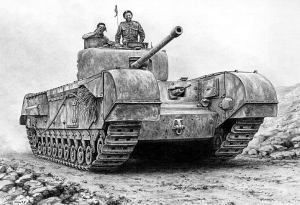 that is all but immune to non dedicated anti tank infantry squads. Though the armor statistics may be identical, the armament of the three variants is quite different in terms of its range and versatility. The type IIIs and IVs have the QQF 6 pdr which has ROF 3, AT 10, a 24 inch range and a 4+ firepower check. This gun is basically identical to the towed version of the gun and serves much of the same purpose. Type III and IVs will be able to provide up to nine shots from their small three tank platoons. Besides having three shots, however, the QQF 6 pdr has no other attributes and a fairly limited range for a fully armored tank. The usefulness of the three main shots is also extremely limited by the reduced rate of fire of moving the tank.
that is all but immune to non dedicated anti tank infantry squads. Though the armor statistics may be identical, the armament of the three variants is quite different in terms of its range and versatility. The type IIIs and IVs have the QQF 6 pdr which has ROF 3, AT 10, a 24 inch range and a 4+ firepower check. This gun is basically identical to the towed version of the gun and serves much of the same purpose. Type III and IVs will be able to provide up to nine shots from their small three tank platoons. Besides having three shots, however, the QQF 6 pdr has no other attributes and a fairly limited range for a fully armored tank. The usefulness of the three main shots is also extremely limited by the reduced rate of fire of moving the tank.
A British player can upgrade their platoon of Churchill IIIs and IVs to VIs (Type NA 75 for Italy lists) for +15 points per tank. The VIs are a significant improvement from the earlier models as a result of their improved QQF 75mm gun. This gun, though having the same AT 10 rating has various other attributes such as a 32 inch range, 3+ firepower check, smoke rounds and 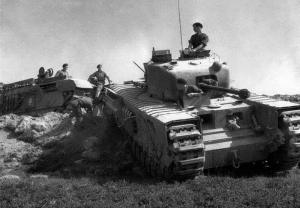 most importantly, the ability use “semi indirect fire”. The ability for Churchill tanks to stay 32 inches away and bombard enemy targets with re-rolls is an invaluable asset to an infantry commander and also allows the tank to take full advantage of its excellent frontal armor. The upgrade to type VIs should be seriously considered by all British commanders for its cheapness and greatly increased versatility. Another optional upgrade for the IIIs, IVs and VIs is the ability to increase the frontal armor from eight to nine for +10 pts per tank. This is another addition that should be taken in almost all circumstance for it will give the tanks frontal armor 10 over 16 inches, making the semi indirect fire function even more devastating and giving your tanks the same armor as a Tiger! The final upgrade for a Churchill platoon out of the Turning Tide book and Fortress Europe (Normandy list) is the option to convert the platoon command tank into a Churchill VII for +60 pts. This relatively expensive upgrade increases the front armor of the vehicle to a staggering 13. The type VII command tank will be all but immune to most incoming fire and even the feared pak 88 can only gain a penetrating hit over 16 inches on an armor save throw of one. The type seven retains all other characteristics of the Type VI including the improved 75mm gun.
most importantly, the ability use “semi indirect fire”. The ability for Churchill tanks to stay 32 inches away and bombard enemy targets with re-rolls is an invaluable asset to an infantry commander and also allows the tank to take full advantage of its excellent frontal armor. The upgrade to type VIs should be seriously considered by all British commanders for its cheapness and greatly increased versatility. Another optional upgrade for the IIIs, IVs and VIs is the ability to increase the frontal armor from eight to nine for +10 pts per tank. This is another addition that should be taken in almost all circumstance for it will give the tanks frontal armor 10 over 16 inches, making the semi indirect fire function even more devastating and giving your tanks the same armor as a Tiger! The final upgrade for a Churchill platoon out of the Turning Tide book and Fortress Europe (Normandy list) is the option to convert the platoon command tank into a Churchill VII for +60 pts. This relatively expensive upgrade increases the front armor of the vehicle to a staggering 13. The type VII command tank will be all but immune to most incoming fire and even the feared pak 88 can only gain a penetrating hit over 16 inches on an armor save throw of one. The type seven retains all other characteristics of the Type VI including the improved 75mm gun.
Churchill Tactics:
First and foremost, it must be recognized that the Churchill is an infantry support tank. It is not a dedicated anti tank hunter, nor can it swiftly move around the table. The tank’s main purpose is to provide durable and steady firepower to a commanders infantry component. There are two main tactics that may be applied to a Churchill’s deployment on the table. The first is the aggressive Churchill platoon. This 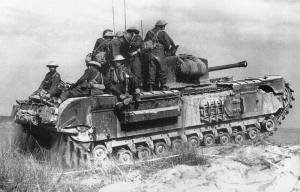 platoon will advance in tandem with infantry platoons while providing fire on medium armor, or dug in targets. Once the advance comes close to the enemy, the tank platoon can be used to launch assaults , providing key pinning if the infantry need to make their own assaults. The aggressive platoon sacrifices its “semi indirect fire” ability for the chance to provide direct support to the infantry and add a great deal of strength to any foot slogging advance. The heavy armor of the Churchill makes it ideal for getting in close with the enemy and any commander planning to use this tactic should always spend the extra 30 pts per platoon to give all three tanks one extra front armor. The aggressive tactic is how I most often use my own Churchills and I find it creates an extremely durable and effective attacking force.
platoon will advance in tandem with infantry platoons while providing fire on medium armor, or dug in targets. Once the advance comes close to the enemy, the tank platoon can be used to launch assaults , providing key pinning if the infantry need to make their own assaults. The aggressive platoon sacrifices its “semi indirect fire” ability for the chance to provide direct support to the infantry and add a great deal of strength to any foot slogging advance. The heavy armor of the Churchill makes it ideal for getting in close with the enemy and any commander planning to use this tactic should always spend the extra 30 pts per platoon to give all three tanks one extra front armor. The aggressive tactic is how I most often use my own Churchills and I find it creates an extremely durable and effective attacking force.
The second main approach to using the infantry tank is in the over-watch support role. Tanks used in this fashion will sit over 16 inches from the enemy and bombard their positions with re-rolled “semi-indirect fire”. While being over 16 inches away from the enemy will reduce the direct support giving to the infantry, this role will allow the vehicle to use all of its special rules and still take advantage of its heavy frontal armor. The over-watch Churchill will provide support from afar and may also use its smoke rounds to great advantage if dealing with heavy armor that may be encroaching on your infantry platoons. On the defense, this role will also be used to lock down objectives or key areas of the board where you opponent may maneuver.
When wilding a force with Churchills, British commanders must always be aware of the limitations of these vehicles and never force them into tasks in which they are ill suited for. Against heavy armor, these tanks will utterly fail. They may stick around for a bit longer than shermans or cromwells, but they will eventually succumb to the superior guns of tigers and panthers. If such vehicles appear, make use of the dedicated AT units in your force such as m-10s, Fireflies, typhoon air support or towed AT guns. The speed of these tanks also limits their use to the role in which they were designed: moving slowly with the infantry. Do not expect your Churchills to outflank your opponent or dash onto an objective. Probably the biggest weakness of the Infantry tank platoon is its small size of three vehicles. It will often struggle in certain assaults (especially if trained) and can be forced to take moral checks quite easily. The high armor values and protected ammo, however, help keep this small unit up and running.
The Churhill tank can be used to great success by a British commander if they employ the vehicle correctly in support of their infantry. Churchills are often the bane of German opponents who do not take the big cats (Tigers and Panthers) in their lists and can give a general infantry advance the much needed punch it needs to overcome an enemies defenses
Waffen SS Companies – The German Elite
The Germans in FoW are not alloted many oportunities to modify their morale. They do not get special rules to reroll motivation tests or units like commisars. The solution to this problem for German players is the ability to field Waffen-SS companies. The Waffen-SS from 1943 to 1945 were some of the best equiped and motivated formations available to the Wehrmacht and they were present at nearly every decisive engagement. As the war ground on, the size of the Waffen SS increased until the organization fielded some 600,000 men at its height. In Flames of War, Waffen SS companies represent a potent weapon for German players.
The great strength of the Germans in FoW is that nearly all their lists are Veteran. Veterans are harder to hit and more capable in their tasks. They pass their skill tests on a 3+ making them much easier to dig in, get through difficult terrain and much more deadly in assaults. Where most German lists are average howerver, is their Confident rating. Veteran platoons might be more effective on the battlefield but there is no guarantee that when the going gets tough they will fight it out till the end. Once losses start piling up (and they will!), the average German platoon has only a 50% chance of sticking around. In FoW SS-companies are rated Fearless. This means that all motivation test are passed on a 3+, ensuring a 66% success rate if the dice are kind. I have played games with both regular Wehrmacht lists and SS-companies and I have to say that the number of times the SS have let me down in a game are few are far between. Many a turn either a platoon or my company had to take a critical motivation test and a 3 came up, meaning the fight would continue. A standard German company or platoon would have fled, leaving the field to my opponent.
It is in the assault phase that SS units really shine. Too many times have critical assaults of mine failed to push an enemy off an objective simply because I couldnt roll (or even re-roll) a 4+ for my counterattack. Assaults in FoW are more about determination than skill. Both sides are going to take heavy losses so the platoon that can reliably pass its counterattack roll is usually going to prevail. Being Fearless is a godsend for this as even with only a couple of bases left, SS troops have a fighting chance of winning an assault. If the SS troops happen to be Veteran as well, then so much the better! Fearless Vet SS platoons are some of the most devastating units in the assault phase of FoW. The three main Veteran SS-Panzerdivisions (2nd SS, 3rd SS, and 12th SS) that can be fielded in FoW have special rules to further their lethality and effectivness in assaults.
-
12th SS infantry platoons can auto-pass a failed counterattack roll
-
2nd SS infantry platoons can attempt to unpin themselves from damage incured during the Assault step
-
3rd SS infantry platoons can sacrifice teams to reroll motivation or skill test during assaults.
The biggest disadvantage to taking SS companies is cost. Im not going to harp on this topic too much because I covered it in my Panther and German overview articles. Needless to say SS units are quite pricey. Combined with their Fearless status is the fact that they are all from Panzergrenedier divisions. Mechanized and MG infantry Platoons were never cheap in Confident Veteran lists and SS equivalents push this point total even higher. Thankfully in the new Earth and Steel book, most of the Veteran SS mechanized and infantry platoons get significant point reductions, allowing more units to be fit it. None the less, making an SS company requires some hard choices. Any superfluous units must be taken out; only the most essential platoons that are required for victory can be afforded. One alternative that can be taken is by fielding a Fearless Trained SS companie. Being Trained obviously has its disadvantages, but the point reduction from Veteran allows for a more normal amount of platoons to be fielded. These Fearless Trained lists can afford to be aggressive with their large amounts of heavily armed and well motivated platoons. Concurrently, only lists from the 5th SS panzergrenadier division (FT) have access to Trained Panthers. These Panthers run around 50pts cheaper a tank meaning that 8 or even 9 Panthers can be taken along with some infantry support.
SS units are the best fighting companies available to a German player and can be used in any situation. They are relentless in the attack and stubborn in defense. Lavishly equiped they can meet any enemy force and be confident of victory. The main SS divisions allow German players to field a bewildering array of companies such as SS-panzergrenedier kompanies, Gepanzerte SS-panzergrenedier kompanies, SS-panzerpionier kompanies, SS-aufklarungsschwadron, SS-panzerspah kompanies and SS-Panzer kompanies. These appear in Earth and Steel, River of Heroes, and several PDFs that can be found on the Flames of War website. http://www.flamesofwar.com/Default.aspx?tabid=108
American Mechanized Forces
In my opinion the mechanized list is the strongest late war American list. It provides excellent mobility, protection, and firepower.
 Your basic combat platoon in an American mechanized force is one of the most diverse units in the entire game. It has a lot of anti-tank and anti-infantry stopping power, plus when they are mounted they are virtually immune to small arms fire. It is also large, meaning it is hard for the enemy to force a moral check on them. Lastly, as a bonus, each unit has 50 cal-machine guns mounted on 2 of the 5 half tracks, and AA mg’s mounted on the other 3. So the unit has more than enough killing potential with out even disembarking, and the 50-cal’s can destroy opposing half tracks and light vehicles. I would always recommend taking as many of these guys as you can afford.
Your basic combat platoon in an American mechanized force is one of the most diverse units in the entire game. It has a lot of anti-tank and anti-infantry stopping power, plus when they are mounted they are virtually immune to small arms fire. It is also large, meaning it is hard for the enemy to force a moral check on them. Lastly, as a bonus, each unit has 50 cal-machine guns mounted on 2 of the 5 half tracks, and AA mg’s mounted on the other 3. So the unit has more than enough killing potential with out even disembarking, and the 50-cal’s can destroy opposing half tracks and light vehicles. I would always recommend taking as many of these guys as you can afford.
Your entire force cannot just consist of combat choices (unless your playing a very small game), so you will undoubtedly need to fill your list out with support options. A good place to start is to make up what the combat choice is missing, and that is down range Anti-Armor, Armored assaults, and artillery.
You have a few choices in the anti-armor category, unfortunately they are all mediocre. You could take 57mm guns, they are cheap and fairly reliable in dealing with medium 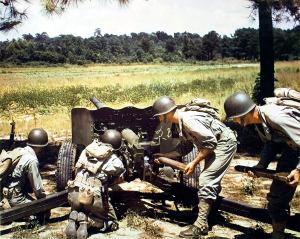 armor, and they come with more 1/2 tracks. Unfortunately they have no HE shells and if they don’t start deployed it will take several turns before they can start firing. Your next choice would be the dedicated tank hunters in their M-10’s. They do have the highest AT in the American force, allowing them to easily destroy medium armor, but they suffer from some pretty bad special rules which make them very, very reliant on terrain heavy tables. Also, they are very costly and not very durable. Lastly, you could pick your self up some good ol’ Sherman tanks. These guys will be just as effective down range as the 57mm guns, but are also armored so they can stand up to anything short of dedicated Anti-armor guns. Plus, they can perform tank assaults when you need that extra push. They are not heavy tanks, but they hold up a lot better than M-10’s and don’t suffer their negative rules either. (I don’t care what people say, I find the American tank hunter rules to be too costly, situational, and more often than not, detrimental.) If you cant deal with enemy armor down field, your half tracks become mobile death traps.
armor, and they come with more 1/2 tracks. Unfortunately they have no HE shells and if they don’t start deployed it will take several turns before they can start firing. Your next choice would be the dedicated tank hunters in their M-10’s. They do have the highest AT in the American force, allowing them to easily destroy medium armor, but they suffer from some pretty bad special rules which make them very, very reliant on terrain heavy tables. Also, they are very costly and not very durable. Lastly, you could pick your self up some good ol’ Sherman tanks. These guys will be just as effective down range as the 57mm guns, but are also armored so they can stand up to anything short of dedicated Anti-armor guns. Plus, they can perform tank assaults when you need that extra push. They are not heavy tanks, but they hold up a lot better than M-10’s and don’t suffer their negative rules either. (I don’t care what people say, I find the American tank hunter rules to be too costly, situational, and more often than not, detrimental.) If you cant deal with enemy armor down field, your half tracks become mobile death traps.
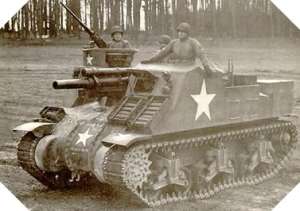 The next gap in your list will be Artillery, and that can be easily filled with a few priests. Artillery is very necessary, you need to be able to pin or smoke out key enemy units to allow your half-tracks free movement on the board, and a small group of priests fill this role well. Obviously, your list is your own, but you would be a fool to not attempt to take at least one group of priests (minimum group size works best). If you can’t smoke out enemy AT guns, then your half tracks become mobile death traps, again. Also a key note about artillery use in a mechanized force, it is not about causing casualties; it is about keeping key units pinned or blind to allow you greater mobility on the board. Your combat units will have more than enough anti-infantry fire power to deal with people out in the open, but they wont get there if anti-tank guns blow your half tracks away.
The next gap in your list will be Artillery, and that can be easily filled with a few priests. Artillery is very necessary, you need to be able to pin or smoke out key enemy units to allow your half-tracks free movement on the board, and a small group of priests fill this role well. Obviously, your list is your own, but you would be a fool to not attempt to take at least one group of priests (minimum group size works best). If you can’t smoke out enemy AT guns, then your half tracks become mobile death traps, again. Also a key note about artillery use in a mechanized force, it is not about causing casualties; it is about keeping key units pinned or blind to allow you greater mobility on the board. Your combat units will have more than enough anti-infantry fire power to deal with people out in the open, but they wont get there if anti-tank guns blow your half tracks away.
One more unit that warrants some thought, the Stuart. This little tank is fast, and more importantly is just as effective in an assault as a full blown tank. They force tank terror, 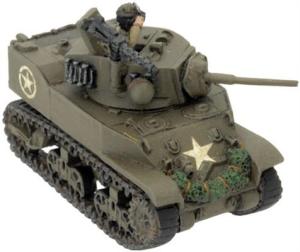 just like the big boys, and that can make a huge difference in an assault. So if you don’t want to spring for the Shermans, or you think they will be busy dueling tanks, then these little guys could come in handy. Also their guns are more than capable of punishing any medium tank that shows its side to them, and they are fast enough to flank. Not everyone will have the points available to spring for these guys, but they do warrant your consideration.
just like the big boys, and that can make a huge difference in an assault. So if you don’t want to spring for the Shermans, or you think they will be busy dueling tanks, then these little guys could come in handy. Also their guns are more than capable of punishing any medium tank that shows its side to them, and they are fast enough to flank. Not everyone will have the points available to spring for these guys, but they do warrant your consideration.
Don’t forget, you need not actually use half tracks if they are not to your advantage; for instance, if the opponent is using an armored list. Before the game starts decide whether or not your half tracks will help you or not. If your defending a point from an armored foe, then dig-in with your large platoons and force them to assault you plethora of bazookas, 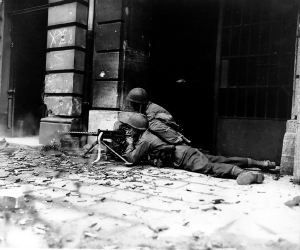 don’t give them easy half track kills to force your moral check sooner. Remember you can dismount your forces and send those half tracks to the rear at any point in the game (once they are gone, you cannot re-summon them). You can also dismount the guns on the half tracks by simply replacing a rifle base with an appropriate MG base (this lowers their save from a 3+ to a 5+, but gives you a lot more shots. Best used when your digging in around an objective.)
don’t give them easy half track kills to force your moral check sooner. Remember you can dismount your forces and send those half tracks to the rear at any point in the game (once they are gone, you cannot re-summon them). You can also dismount the guns on the half tracks by simply replacing a rifle base with an appropriate MG base (this lowers their save from a 3+ to a 5+, but gives you a lot more shots. Best used when your digging in around an objective.)
Lastly, remember to have fun, or else what is the point of playing?
Unit Analysis: The British 6 Pounder
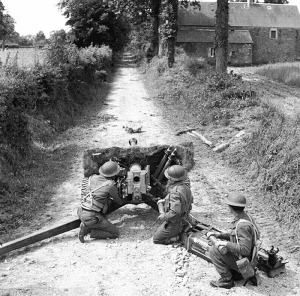 The six pounder anti-tank gun is arguably one of the most under-rated and under-appreciated weapons in the British arsenal or even Flames of War. This little gun however, is capable of hitting far beyond its apparent weight and is an important part of any British rifle company in either mid or late war. This article will analyze the basic characteristics of the unit along with how its moderate stat line can be put to the maximum potential on the table.
The six pounder anti-tank gun is arguably one of the most under-rated and under-appreciated weapons in the British arsenal or even Flames of War. This little gun however, is capable of hitting far beyond its apparent weight and is an important part of any British rifle company in either mid or late war. This article will analyze the basic characteristics of the unit along with how its moderate stat line can be put to the maximum potential on the table..
The strengths of the 6 pdr elude many players in late war as a result of its modest stat line; anti tank 10, 4+ FP check and a 24 inch range. This “modest” stat line however is backed up by two powerful attributes that give this gun deadly potential. The first major characteristic is that the 6 pounder can be taken in platoons of six guns. Such a large amount of guns allows this unit to block entire areas with its size alone. Along with this fact is that four bases must be lost before the platoon has to take its first motivation check. The large platoon size also goes hand in hand with the gun’s most important attribute; a rate of fire of three. When wielding all six guns, this platoon can unleash a devastating 18 shots into an opposing target. There are few, if any anti-tank assets in the game that can fire such a salvo. Another important element of the six pounder that gives it great diversity is its ability to fire high explosive rounds (HE). With six of these weapons on the table, the platoon can function as an ad hoc heavy machine gun unit with the benefit of gun shields.
.
The strengths of the six pounder can only be realized however, if the unit is given a fighting chance on the table. First and foremost, it must be recognized that this weapon has no ability to hurt heavy armor in a straight on fight. Tigers and Panthers will simply sit back and blow these guns away if they are put 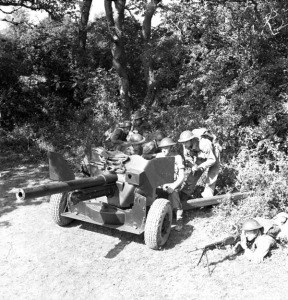 into such a position. The six pounder must be handled with tactical sense and will often require a great deal of craftiness to use properly. One circumstance that the six pounder does excel in is deterring armored assaults. If properly concealed or covered by friendly units, a platoon of these weapons will force even heavy armor to waste time in an attempt to destroy the platoon. With its ROF 3 gun, even two of these weapons can cause a great deal of pain to an armored assault, as six AT 10 shells (if unpinned) could hit the vulnerable side armor of your opponent. For this reason, the six pounder can be an excellent blocking or delaying unit that can open possibilities for other units on the table.
into such a position. The six pounder must be handled with tactical sense and will often require a great deal of craftiness to use properly. One circumstance that the six pounder does excel in is deterring armored assaults. If properly concealed or covered by friendly units, a platoon of these weapons will force even heavy armor to waste time in an attempt to destroy the platoon. With its ROF 3 gun, even two of these weapons can cause a great deal of pain to an armored assault, as six AT 10 shells (if unpinned) could hit the vulnerable side armor of your opponent. For this reason, the six pounder can be an excellent blocking or delaying unit that can open possibilities for other units on the table.
 into such a position. The six pounder must be handled with tactical sense and will often require a great deal of craftiness to use properly. One circumstance that the six pounder does excel in is deterring armored assaults. If properly concealed or covered by friendly units, a platoon of these weapons will force even heavy armor to waste time in an attempt to destroy the platoon. With its ROF 3 gun, even two of these weapons can cause a great deal of pain to an armored assault, as six AT 10 shells (if unpinned) could hit the vulnerable side armor of your opponent. For this reason, the six pounder can be an excellent blocking or delaying unit that can open possibilities for other units on the table.
into such a position. The six pounder must be handled with tactical sense and will often require a great deal of craftiness to use properly. One circumstance that the six pounder does excel in is deterring armored assaults. If properly concealed or covered by friendly units, a platoon of these weapons will force even heavy armor to waste time in an attempt to destroy the platoon. With its ROF 3 gun, even two of these weapons can cause a great deal of pain to an armored assault, as six AT 10 shells (if unpinned) could hit the vulnerable side armor of your opponent. For this reason, the six pounder can be an excellent blocking or delaying unit that can open possibilities for other units on the table..
Although the six pounder is quite inept at dealing with high frontal armor, it is more that capable of dealing with all sorts of medium armor or assault guns. Even StuGs (with their 7 frontal armor) will be reluctant to enter the field of fire of a 6 pounder platoon. I have withered down entire StuG platoons over time by the sheer number of shots being poured into them every turn. The six pounder will also give any mechanized player a huge headache, as they will be unwilling to move any of their half-tracks or light vehicles within range of even one unpinned gun.
.
When wielding Six pounders, it is also essential to position your platoons so that they may get side shots on enemy armor or be put into concealing terrain. The British have two cost effective ways of keeping their six pounders mobile. The first is a 5 point upgrade for the entire platoon that gives every gun a Loyd armored transport. This extremely cheap option gives your guns great 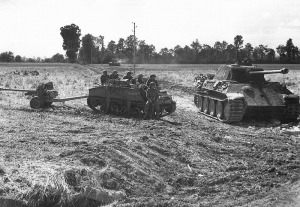 mobility if the situation calls for it. The second option is the uniquely British rule of “tow hooks”, which allows a variety of armored vehicles such as Shermans and Churchills to tow six pounders like a transport team. The ability to keep a six pounder platoon mobile is often overlooked or outright ignored by British players, much to their detriment. In any game that may require your six pounders to be left off the table, the platoon may become near useless as it struggles to move two inches a turn to get into position. I can vouch from personal experience that mobile six pounders have greatly contributed to my victories as a result of them being moved into positions to provide covering fire for my infantry and armor.
mobility if the situation calls for it. The second option is the uniquely British rule of “tow hooks”, which allows a variety of armored vehicles such as Shermans and Churchills to tow six pounders like a transport team. The ability to keep a six pounder platoon mobile is often overlooked or outright ignored by British players, much to their detriment. In any game that may require your six pounders to be left off the table, the platoon may become near useless as it struggles to move two inches a turn to get into position. I can vouch from personal experience that mobile six pounders have greatly contributed to my victories as a result of them being moved into positions to provide covering fire for my infantry and armor.
 mobility if the situation calls for it. The second option is the uniquely British rule of “tow hooks”, which allows a variety of armored vehicles such as Shermans and Churchills to tow six pounders like a transport team. The ability to keep a six pounder platoon mobile is often overlooked or outright ignored by British players, much to their detriment. In any game that may require your six pounders to be left off the table, the platoon may become near useless as it struggles to move two inches a turn to get into position. I can vouch from personal experience that mobile six pounders have greatly contributed to my victories as a result of them being moved into positions to provide covering fire for my infantry and armor.
mobility if the situation calls for it. The second option is the uniquely British rule of “tow hooks”, which allows a variety of armored vehicles such as Shermans and Churchills to tow six pounders like a transport team. The ability to keep a six pounder platoon mobile is often overlooked or outright ignored by British players, much to their detriment. In any game that may require your six pounders to be left off the table, the platoon may become near useless as it struggles to move two inches a turn to get into position. I can vouch from personal experience that mobile six pounders have greatly contributed to my victories as a result of them being moved into positions to provide covering fire for my infantry and armor..
The last and arguably the most effective manner to use six pounders is in the role of an ambushing unit in a defensive mission. Whether the platoon is shooting 18 high explosive shots into an unsuspecting infantry platoon or surprising Panzer IVs, the intensity of a full volley of six pounders makes them an excellent choice for ambushing. The mere potential of the six pounder in ambush can force your opponent to constantly consider where the unit might be deployed and thus affect their game.
.
Even with all the great acclaim I have heaped on this little gun, its low point cost (roughly 155 for a full platoon of six) means that even if it destroys very few enemy teams it has not burnt a hole in your wallet. On a whole, the six pounder is a cheap, effective gun that fills the important role in a British or commonwealth list for a medium, high ROF anti tank gun. As a Canadian/British player I take a platoon of these guns every time I play with a rifle company. The six pounder can do great things for a British player if deployed and handled correctly, but do not anticipate the gun to perform miracles as it will let you down if expected to do so.

